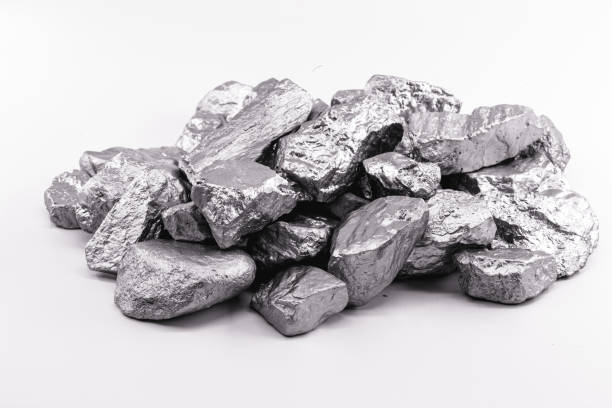Molybdenum

Parameter Type: Drinking Water Testing for Metals
Parameter Name: Molybdenum
What it is and Where it Comes From:
Molybdenum is in the Periodic Table and has an atomic number of 42 and symbol of Mo. It is typically a hard, silvery-white metallic element. It plays an important role for human, animal, and plant health and has an important part in the evolution of life on earth. Although, exposure to the element at high levels can be harmful, evidence for symptoms in humans is sparse, it has been linked with several health conditions in animals. Molybdenum is present in trace quantities in most rocks and soils, as well as most freshwaters. It is the most abundant transition metal in open seawater owing to the dominance, and low chemical reactivity, of the molybdate ion. You can find it in fertilizers, dyes, enamels, and reagents. The amount of molybdenum in plant-derived foods depends on the soil content. Drinking water testing gives you several benefits like peace of mind, identifying contaminants in your water, and insight into health concerns. Safe Home offers Laboratory drinking water testing kits for molybdenum, allowing you to collect your water sample and ship it directly to our EPA-Certified Laboratory. This platform of drinking water testing for molybdenum will give you an accurate level based on the lowest level of a parameter our instruments can detect (Method Detection Level). Safe Home drinking water testing for metals can be used for city and well water supplies. Drinking water testing should be done any time you notice a significant change in your water quality.
Health Effects:
While low levels of molybdenum are required to maintain health, high levels may cause health challenges. Molybdenum is stored in the liver, kidneys, glands, and bones. It works in the body to break down proteins, too. It is recommended to not exceed 2 mg per day of Molybdenum. Exceeding the recommended dosage can possibly lead to gout. Studies in research animals have shown that eating or drinking high levels of molybdenum can damage the kidneys and liver and affect reproduction and development.
Solutions to Contaminant Levels:
After drinking water testing, how can molybdenum be reduced? Molybdenum is not removed from drinking-water by normal treatment processes and appears to require specialist treatment such as ion exchange. Molybdenum generally occurs at very low concentrations in drinking-water, and it is therefore not considered necessary to set a formal guideline value. Ion exchange is a water treatment method where one or more undesirable ionic contaminants are removed from water by exchange with another non-objectionable, or less objectionable ionic substance. Both the contaminant and the exchanged substance must be dissolved and have the same type of electrical charge (positive or negative). A typical example of ion exchange is a process called “water softening” aiming to reduce calcium and magnesium content. Nevertheless, ion exchange is also efficient in removing toxic metals from water. The main component of ion exchange equipment is a microporous exchange resin, which is supersaturated with a loosely held solution. For water softening, this is usually done with sulfonated polystyrene beds that are supersaturated with sodium to cover the bed surface. As water passes through this resin bed, ions attach to the resin beads releasing the loosely held solution into the water. After a time, the beds become saturated, and the exchange resin must be regenerated or recharged. To regenerate, the ion exchange resin is flushed with a salt brine solution. The sodium ions in the salt brine solution are exchanged with the ions, which are flushed out with wastewater. Who do I need to contact to find out more information about water quality in my area? Every community water supplier must provide an annual report to its customers, known as a Consumer Confidence Report (CCR). The report provides information on your local drinking water quality, including the water’s source, contaminants found in the water, and how consumers can get involved in protecting drinking water. How often does the local public water system preform drinking water testing? Frequency of drinking water testing depends on the number of people served, the type of water source, and types of contaminants. Certain contaminants are tested more frequently than others, as established by the Safe Drinking Water Act. You can find out about levels of regulated contaminants in your treated water for the previous calendar year in your annual Consumer Confidence Report (CCR).
File Under: Metals
Drinking Water Testing - Parameter Types
Important Terms
-
MCL’s (Maximum Contaminant Levels) MCL’s are levels that set by the USEPA and are enforceable to Public Water Utilities, requiring additional treatment, when the levels are exceeded. These same guidelines should be at least considered, by owners of private wells. Some states have more strict guidelines than the USEPA. Not all parameters have MCL’s. If the parameter has an MCL, it’s listed.
-
MCLG’s (Maximum Contaminant Level Goals) MCLG’s are goals set by the USEPA that we should all strive for when consuming drinking water from any water supply. Concentrations of certain parameters (even below the MCL’s), are still not healthy for humans and animals to drink. These same guidelines should at least be be considered, by owners of private wells. Some states have more strict guidelines than the USEPA. Not all parameters have MCLG’s. If the parameter has an MCLG, it’s listed.
-
ACTION LEVELS ACTION LEVELS are a specified concentration of a respective parameter in drinking water, that is above a “treatment level” set by the USEPA. When these levels are exceeded, further treatment and monitoring is required by the respective utility who’s water violated this limit.Action Levels apply to parameter-rules such as but not limited to the Copper/Lead Rule.
-
PARTS PER MILLION (ppm) PPM is a scientific measurement which represents milligrams of the parameter being tested per liter of the respective liquid. Example: If Copper in your water supply is at a concentration of 1.00 mg/L, this is the same as saying the concentration is 1.00 ppm.


